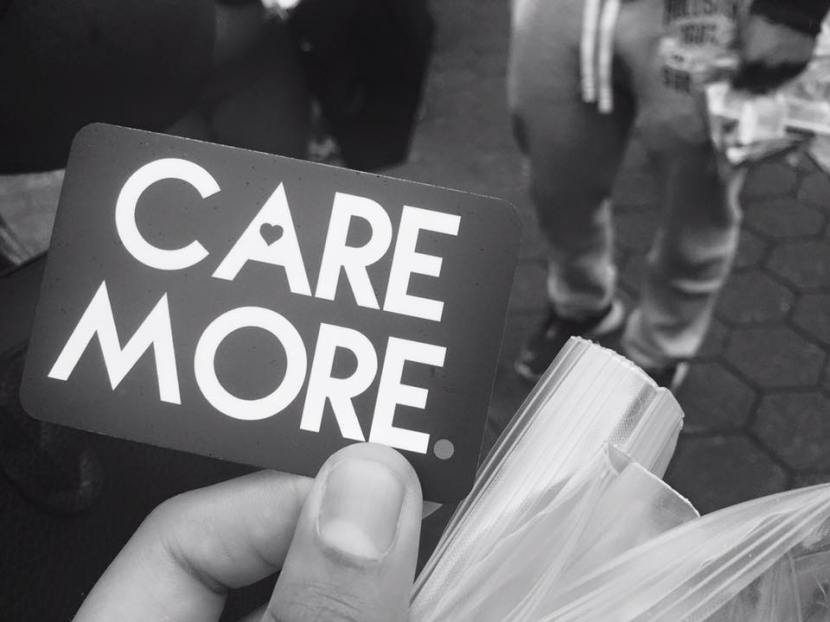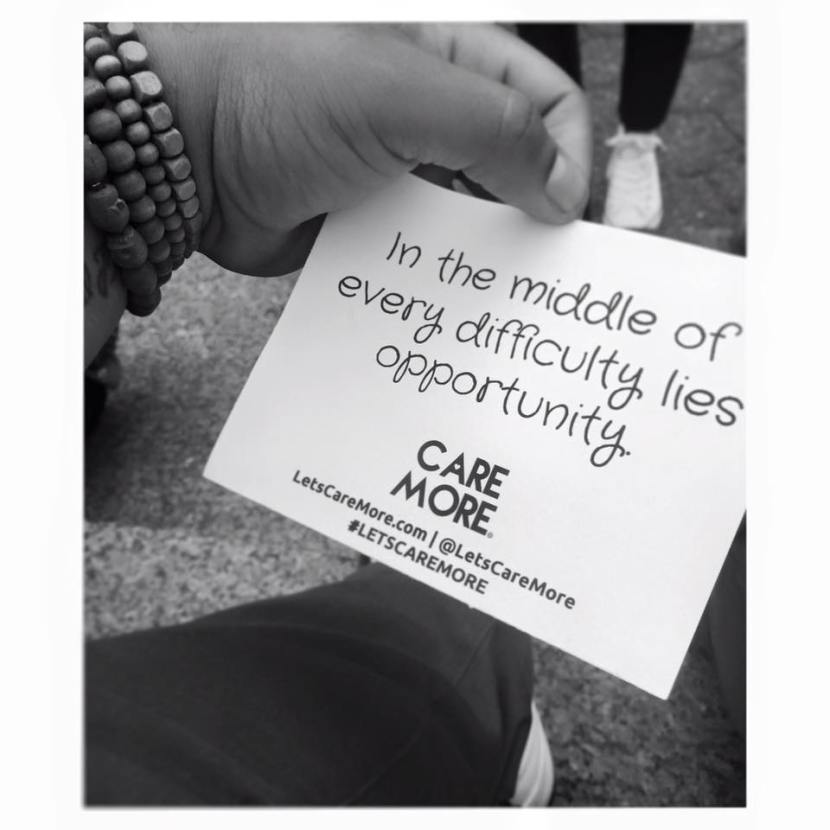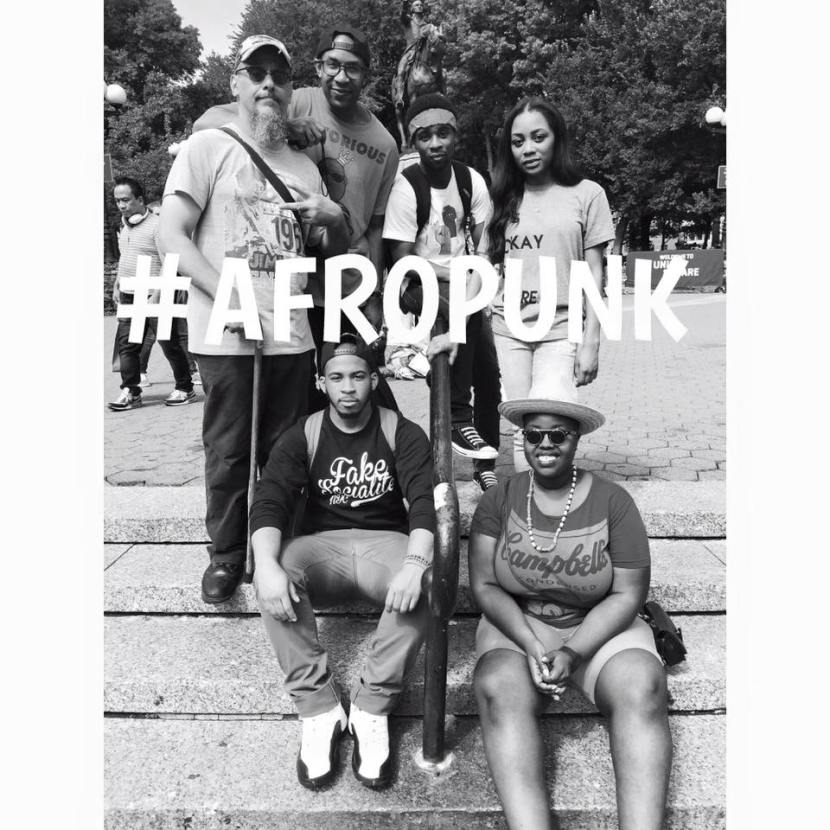Tagged: income inequality
Homeless Outreach with Afropunk & Care More.
today, i got the opportunity to meet some pretty cool people by volunteering with an incredible non-profit organization by the name of Care More. Care More was founded last year by then 23 year old Mercedes Smith. Mercedes has been going around to the homeless in cities like NYC and Philly with the goal of making them feel more human by acknowledging their existence, talking and providing them with words of encouragement and giving them care packages that she’s made. the experiences from today reaffirm that we have to start caring less about ourselves and more for each other & the greater good of our society. it’s really not a hard thing to do…in the near future, Care More will be expanding to cities like Atlanta and Washington, D.C. i look forward to helping out again and i encourage everyone to do the same!!
Photos by Bill Spencer (who is rocking the Fake Socialite NYC shirt in the last photo).
“Brooklyn’s ‘gentrification’ is changing juries who decide cases.”
Brooklyn’s courthouses are being rocked by the “Williamsburg Effect.”
The influx of well-off and educated white people to trendy neighborhoods such as Williamsburg is rapidly “gentrifying’’ the borough’s jury pool — and transforming verdicts, lawyers and judges told The Post.
It’s good news for prosecutors in criminal cases — and bad news for plaintiffs in civil lawsuits, they said.
“The jurors are becoming more like Manhattan — which is not good for defendants,’’ noted veteran defense lawyer Julie Clark.
“They are . . . much more trusting of police,” Clark said of the jurors. “I’m not sure people from the University of Vermont would believe that a police officer would [plant] a gun.’’
Former Brooklyn prosecutor and defense lawyer John Paul DeVerna said, “The ‘Williamsburg Effect’ affects every case that goes to trial.
“A contrarian-minded person — and Billyburg has them in spades — can cause discord in the jury room. And if the hipster gets along with everyone, that can even be more dangerous because they are confident and educated, which means they have the potential to hijack the jury.”
The seismic shift also is affecting grand juries, lawyers said.
“The grand jury used to have an anti-police sentiment. When I was a prosecutor 22 years ago, a jury would be 80 percent people of color,” said high-profile lawyer Arthur Aidala. “Now, the grand juries have more law-and-order types in there.
“People who can afford to live in Brooklyn now don’t have the experience of police officers throwing them against cars and searching them. A person who just moves here from Wisconsin or Wyoming, they can’t relate to [that]. It doesn’t sound credible to them.”
Meanwhile, civil juries have become more pro-defendant.
“There’s an influx of money, and when everything gets gentrified, these jurors aren’t pro-plaintiff anymore,” said plaintiff lawyer Charen Kim.
“We’re dealing with more sophisticated people, and they don’t believe [plaintiffs] should be awarded millions of dollars for nothing.”
The percentage of white people in Brooklyn grew from 41 percent to 50 percent between 2000 and 2012, according to US Census data.
Rents in the borough also spiked by 77 percent over the same period, according to a recent report by the city comptroller’s office.
Read more here: http://nypost.com/2014/06/16/brooklyn-gentrification-is-changing-juries-who-decide-cases/.
NYT: Hispanics in America are “Faring Better Than Blacks.”
Hispanics generally fare better than blacks in rankings of inequality in American life, according to a new report by the National Urban League to be released on Thursday.
The annual report, called the State of Black America, for the first time this year also included a ranking of income inequality and unemployment for 77 American cities that had large black populations and 83 cities that had large Hispanic populations, based on data from the American Community Survey, an annual survey by the Census Bureau.
“You can’t have a conversation about income inequality without talking about race,” said Marc H. Morial, the president and chief executive of the National Urban League. “Black and brown people are significantly being left behind.”
Nationwide, black Americans are twice as likely to be unemployed as whites (13.1 percent of blacks versus 6.5 percent of whites, according to data from the Bureau of Labor Statistics). The rate for Hispanics was 9.1 percent. The report also focused on underemployment which includes those who are jobless and not looking or working part-time jobs but desiring full-time work. According to the report, the underemployment rate for black workers was 20.5 percent, compared with 18.4 percent for Hispanic workers and 11.8 percent for white workers.
The report ranked metropolitan statistical areas where the unemployment gap between blacks and whites was both larger and smaller than the national average. Unemployment levels include those who are actively looking for work.
Topping the list with the smallest employment gap was the Augusta-Richmond County area in Georgia, where 13.3 percent of blacks are unemployed compared with 8.5 percent of whites, and blacks in that area are about 1.5 times more likely to be unemployed than whites. Other areas where the gap between black and white unemployment was smaller than the national average included the Riverside-San Bernardino-Ontario region in California, the Palm Bay-Melbourne-Titusville region in Florida, the Las Vegas metro area, and the Chattanooga, Tenn., metro area.
The biggest employment gap was found in Madison, Wis., where 18.5 percent of blacks are unemployed compared with 4.4 percent of whites. Other cities with gaps that are larger than the national average included Lancaster, Pa.; Milwaukee-Waukesha-West Allis, Wis.; the Minneapolis-St. Paul-Bloomington, Minn., metro area; the Des Moines metro area; and Baton Rouge, La.
There were also differences in income between blacks and whites. The region with the smallest gap in median income between blacks and whites was Riverside, Calif., which also had one of the smallest unemployment gaps between the two groups. In that area, the median household income for blacks was $44,572 a year compared with $57,252 for whites. In the Twin Cities metro area in Minnesota, one of the regions with the highest gap in unemployment between whites and blacks, the median household income for blacks was $28,784 a year compared with $71,376 for whites.
There were no cities where blacks fared better than whites in terms of income or employment. That was not true for Hispanics.
In the greater Memphis area, for example, 3.8 percent of Hispanics were unemployed compared with 6.5 percent of whites. Jacksonville, Fla., the Indianapolis metro area and the Nashville metro area all had higher rates of unemployment for whites than among Hispanics. In Madison, Wis., where the gap between whites and blacks both in income and unemployment was significant, the percentages of unemployed Hispanics, 4.5 percent, was almost identical to that of whites. That city also ranked among the top 20 for income equality between Hispanics and whites, where the median household income for Hispanics was $45,514 a year compared with whites at $62,585. The area with the smallest income gap between Hispanics and whites was the Lakeland-Winter Haven region in Florida where the median household income for Hispanics was $39,434 a year compared with $44,014 for whites. The city with the largest income gap between those two groups was Springfield, Mass., where the median income for Hispanics was $20,762 compared with $58,549 for whites.
Source: http://www.nytimes.com/2014/04/03/us/report-finds-hispanics-faring-better-than-blacks.html?_r=0.



